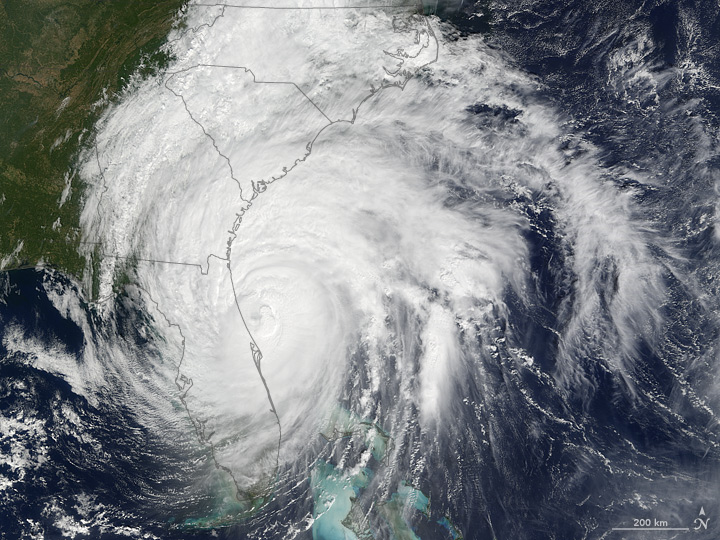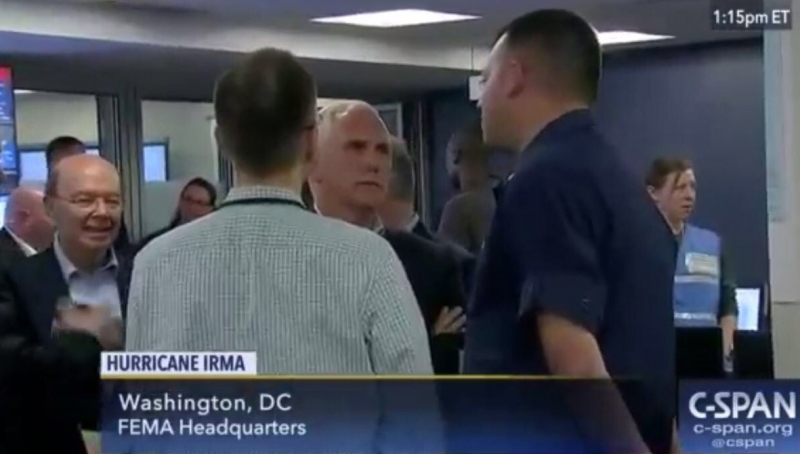
When a natural disaster strikes that is so severe that local and state governments together cannot provide the necessary resources, it’s declared a national disaster. During these disasters, the federal government steps in to provide resources — through both response support, the use of federal programs, and supplies. When a national disaster is declared, the Federal Emergency Management Agency (FEMA) is the official advisor to the U.S. president — coordinating the activation and implementation of the Federal Response Plan.
In the last two years, an important new role has been established for the National Ocean Service (NOS) to liaise within FEMA. The position, currently filled by a NOAA Corps officer from NOAA’s Office of Response and Restoration, acts as a representative for NOS in the aftermath of coastal disasters such as hurricanes. This role is one of two NOAA representatives detailed to FEMA during disasters to coordinate NOAA activities. The National Weather Service provides a similar role and maintains a full-time official NOAA liaison to FEMA.
NOS identified the need for such a role during the 2016 hurricane season. Following Hurricane Matthew, to enhance the emergency response presence at FEMA’s National Response Coordination Center (NRCC) during activations, NOS began planning for coverage during and after disasters. This planning better prepared NOS prior to the active 2017 hurricane season that included hurricanes Harvey, Irma, and Maria, for a more strategic link to FEMA to coordinate and promote NOS activities during nationally declared disasters.

The pre-planning for the 2017 hurricane season for this role and other internal disaster coordination activities in NOS paved the way for the establishment of the NOS Disaster Preparedness Program within OR&R in November 2017.
This role, which supplements the role provided by the weather service, is typically requested by FEMA through a mission assignment. Once the FEMA mission assignment for this NOS role was received, Lieutenant Commander Chris Skapin was selected as one of the first NOAA Corps officers to provide expertise and functionality to NOAA’s seat at FEMA’s NRCC in Washington D.C. At that time, Chris was serving as emergency response program coordinator for OR&R’s Emergency Response Division, tasked with coordinating divisional expertise to support response to coastal oil and chemical spills.
Chris’ additional FEMA role (limited to the duration of the disaster) meant that he covered situational awareness for all NOAA activities and interagency requests that were not covered by the National Weather Service. During the 2017 and 2018 hurricane seasons, his responsibilities included supporting the NOS National Geodetic Survey with mission assignments and flight clearances as well as assisting with the NOS Office of Coast Survey and Navigation Response Team’s mission assignments. He reported back daily on calls conducted by the Disaster Preparedness Program with representatives from across NOS.
Commissioned into the NOAA Corps in 2006, Chris came to the position with a lot of experience that balanced operational sea duty with a variety of professional, operational, and project management positions ashore in NOAA’s National Marine Fisheries Service, Office of Marine and Aviation Operations, and NOS line offices. His bio states, “Serving within different NOAA Line Offices, allowed LCDR Skapin to develop skills that coalesce resources and differing perspectives together toward achieving a common mission, including building strong relationships across different matrices and tying together key processes and practices among the disparate operating units.”

OR&R’s Emergency Response Division already has a long established relationship with the U.S. Coast Guard — providing scientific support and a range of services during oil and chemical spills — making it a logical choice to provide the individual who would be coordinating critical NOS services and support to FEMA. OR&R is familiar with the federal Emergency Support Function Annex system (ESF), a “structure for coordinating Federal interagency support for a Federal response to an incident. They are mechanisms for grouping functions most frequently used to provide Federal support to States and Federal-to-Federal support, both for declared disasters and emergencies under the Stafford Act and for non-Stafford Act incidents,” according to FEMA. OR&R’s experience has mostly been with ESF-10, Oil and Hazardous Materials Response.
While Chris will be moving on in early 2019 to new challenges, his work has helped advance OR&R and NOS capabilities by developing this critical coordination role, representing NOAA within FEMA during national disasters. He established how the role works and has paved the way for the next person to fill the position.
